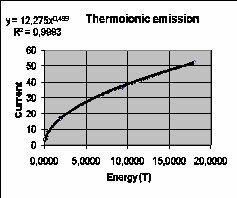
Figure 2. Fitting the values of log(J) versus work function W
3.- Testing Richardson law
Hypothesis: The Richardson like equation for our system has the form
|
|
(1) |
where J is the current density, T is the absolute temperature, W the work function and k the Boltzmann constant.

Analyzing the current density for different values of W (work function) keeping the total energy (proportional to T) constant, we can check the exponential dependence by recording log(J) (current density) as a function of W (metal work function). From the fitting, a value of kT can be obtained and then the total energy kTN of the gas. In the case shown, a value of 2681 was obtained. This can be compared to the total kinetic energy of the gas: 2680 in our simulated experiment.

Other important fact of this equation is the factor f(T) that we can also investigate with the simulation.
The results recorded in Fig. 3 correspond to different situations where we have changed the Temperature keeping
the ratio (W/kT) constant. This allow us to investigate f(T) in equation 1. Fitting a potential
curve to our data results in
|
|
(2) |
If the principles to obtain the Richardson Dushman (Hemenway 1962) equation are applied to our model, a two dimensional ideal gas and the Boltzmann distribution instead of the Fermi one, we analytically obtain a dependence in the form T1/2 for the studied factor. This dependence corresponds to the one obtained with our simulation. Interesting to note that this dependence was the first one that Richardson proposed in 1901 (Owen 1929). It was not until 1911 (Owen 1929) when he concluded in the presently accepted thermionic emission law:
|
|
(3) |
